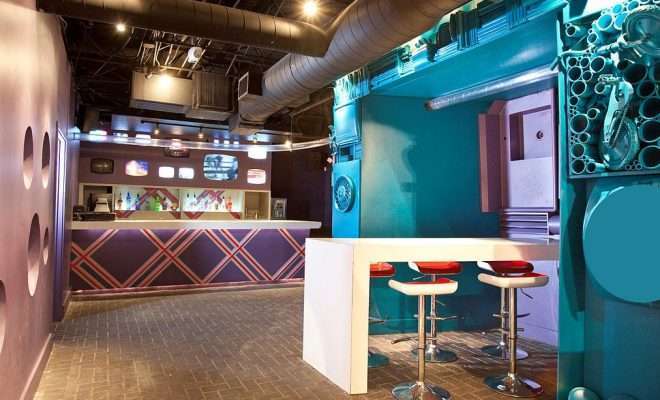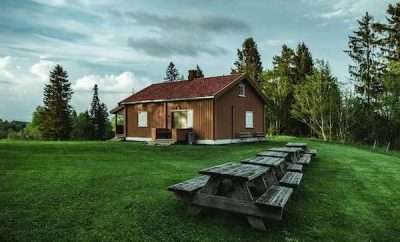
Contemporary Commercial Interiors – Trend Report
Contemporary Commercial Interiors – Trend Report
Commercial interior designers often have the impossible task of choosing solutions that are both functional and budget-friendly, but; at the same time attractive and unique. With expectations and trends constantly shifting, interior spaces often change to match the current taste of employees and customers. In addition, interior designers are not only expected to understand the current trends, but also the future ones; as well as; those that never seem to fade. If you’re doing a complete office overhaul; reinventing your retail store or just making a few changes to boost your staff’s morale; consider these interior trends. Contemporary commercial interiors – trend report.
Source: max pixel
Few permanent workspaces
Pioneered in Silicon Valley; the idea of the open office has been widely adopted in every commercial segment around the world. While initially met with stubborn resistance; now even insurance and legal businesses that consider them conservative are utilizing elements of an open space plan. These include non-assigned seating, creative hubs, and community work tables which increase collaboration of teams working on the same projects.
Twin-purpose designs
Unforgiving startup years and seemingly endless belt-tightening often motivate businesses to find imaginative ways of saving money; including optimizing the interior design. The popularity of multipurpose design has given birth to a number of possibilities, such as having filing cabinets with slide-out seats which can become chairs for informal meetings, or lounge chairs for office break rooms, which are equipped with table arms. This way employees can remain somewhat productive even when taking a break from the main room buzz.
Industrial features
Capitalizing on the raw, urban, and brutal heritage, industrial design has become firmly rooted in workspace interiors. Exposed ceilings, beams, brick walls, and simple pendant lights surely don’t appeal to every company image. Some of these elements can be moderated with more conventional interior features with surprising success. Pendant lights can become a crucial part of many design schemes simply due to their versatility. While some interiors will find brick-style wallpapers a refreshing addition for defusing the atmosphere in the office.
Branding interiors
Branding is an immersive process that sets a company apart from the competition; may include almost anything from the media campaigns and business culture to the headquarters location. Still, when it comes to branding, commercial interior design is often given little consideration, despite its vast potential in reinstating the company’s public image. By working with a commercial construction company that has a vision and vast experience in both small and large-scale commercial projects, you can use the architectural elements, floor plans, and colour schemes to create an environment that mirrors the best qualities of your brand. According to a current bachelor’s degree in interior design, the power of design lies in its ability to bring together things both great and small, light and dark, and make them functional and beautiful.
Spa-inspired restrooms
Now firmly embedded in many home designs, the trend of spa-like restrooms has found its way into commercial interiors. With serenity and meditation as the main principles, interior specialists are redesigning the restroom facilities with plush materials, bright whites, authentic accessories, and unexpected details. Through their spa-like atmosphere, restrooms in commercial buildings are becoming an inseparable element of the interior design, whether the designer has given a personal touch with unique styles, or gone with a simple but sophisticated approach.
BIM-aided designs
Widely used by architectural teams, it’s now become evident that Building Information Modelling (BIM) software has immense potential in interior design, as well. Even though an experienced designer needs hardly anything more than a sketch to visualize the space arrangements, clients might not see much beyond the 2D drawings only. Apart from fostering better communication with clients, BIM also improves collaboration between diverse teams working on the same project.
Biophilic elements
By promoting natural features in the workspace, biophilic designs work alongside the innate human need to be surrounded by nature. As people nowadays spend much more time working and living indoors than outside. Companies in metropolitan hubs which have restricted access to the outdoors often embrace biophilic elements such as living walls, water features, rooftop edible gardens, and designs that maximise natural light.
Residential themes
For many high-productivity employees, the workplace definitely seems like a second home. To support these hard-working professionals that sometimes feel they’re punching in when they come home from work instead of vice versa, companies are increasingly adopting residential features such as comfy Google-inspired resting pods, elaborate kitchen islands with barstools, loaded with fruit, snacks, and even beer taps. Such homelike elements are found not only to increase productivity but also to contribute to the unique spirit of the space.
Emerging commercial interior designs like these not only help your public image grow stronger but also improve customer satisfaction and staff morale on a daily basis. Who doesn’t want that?















